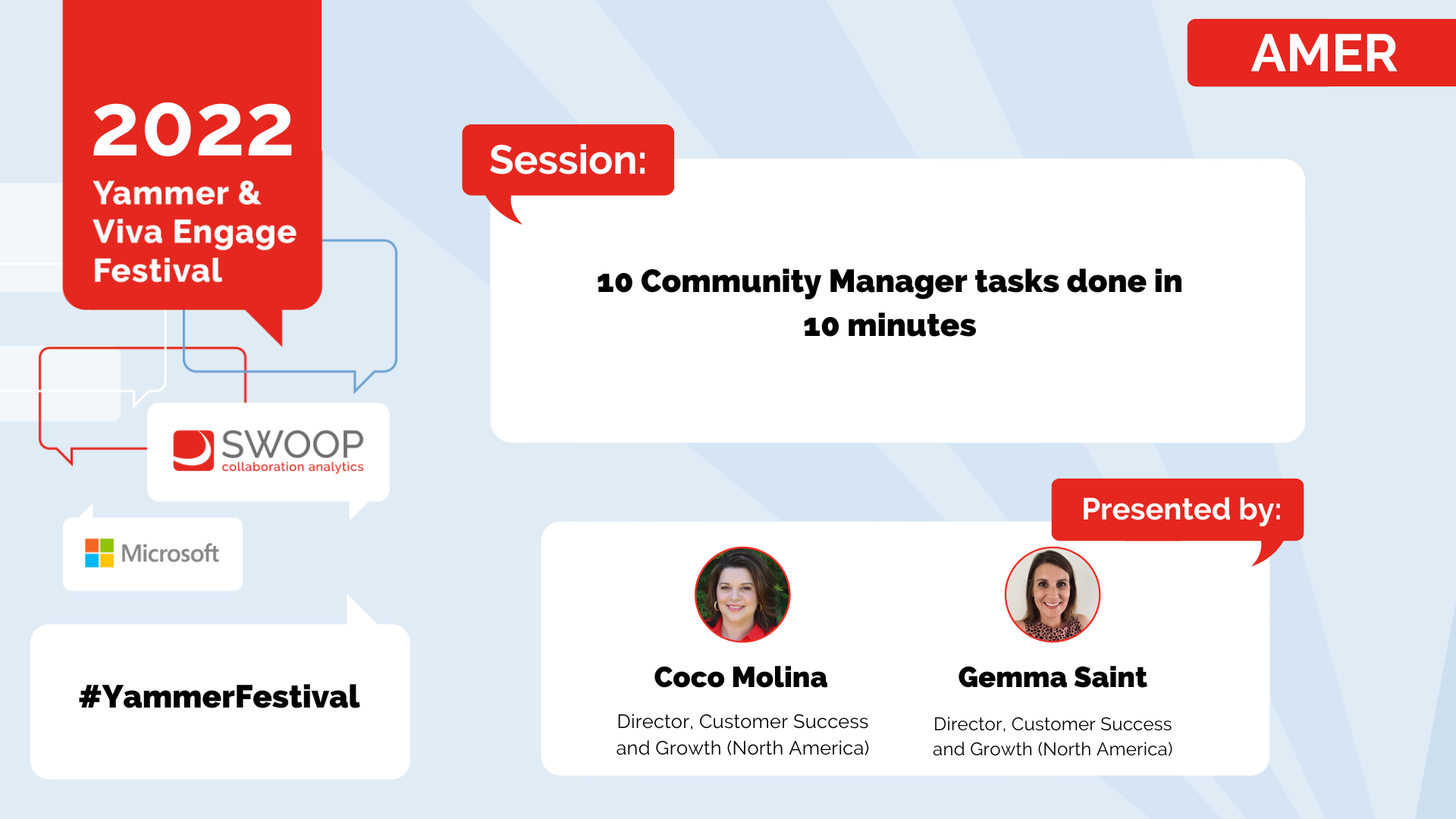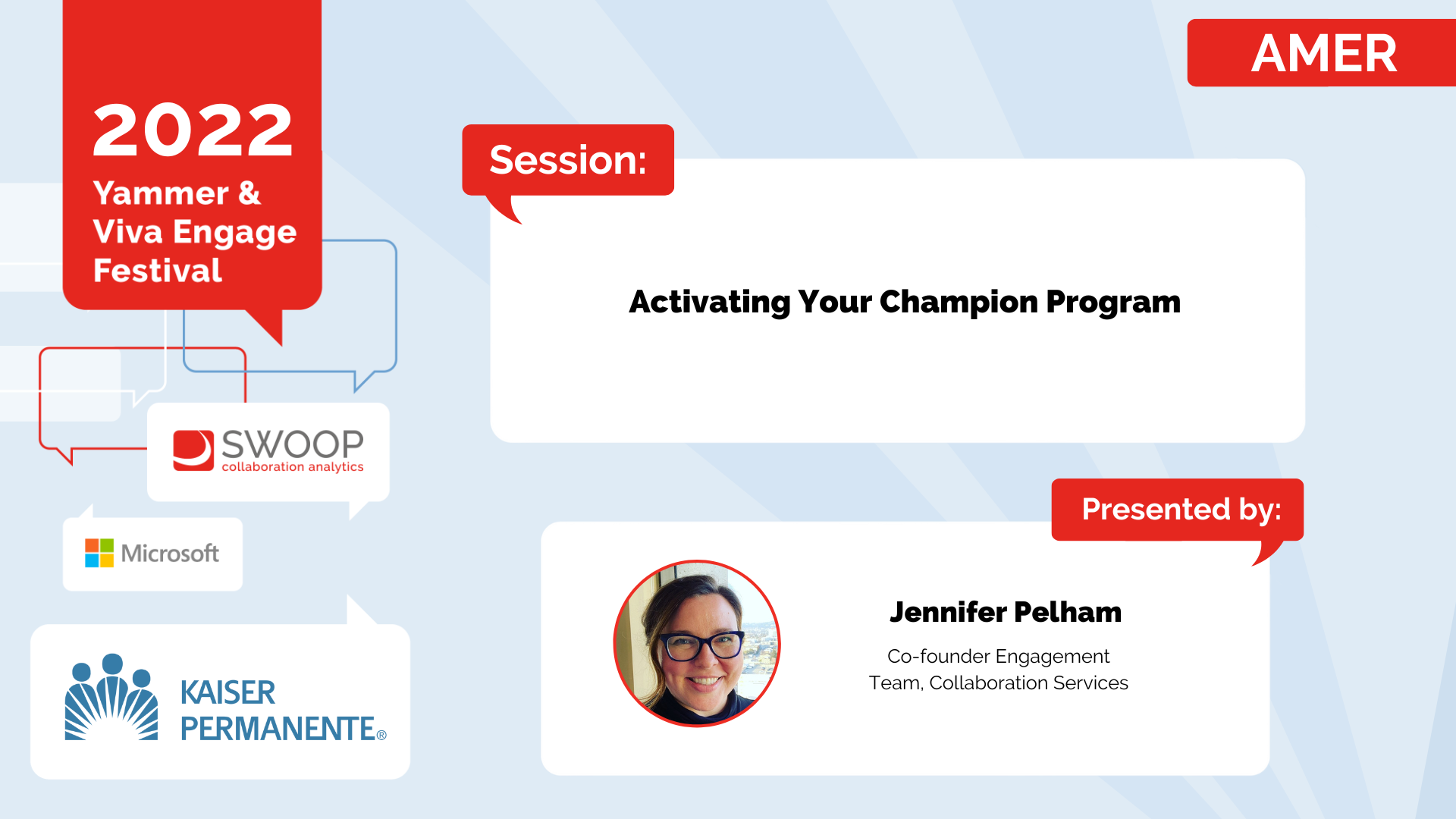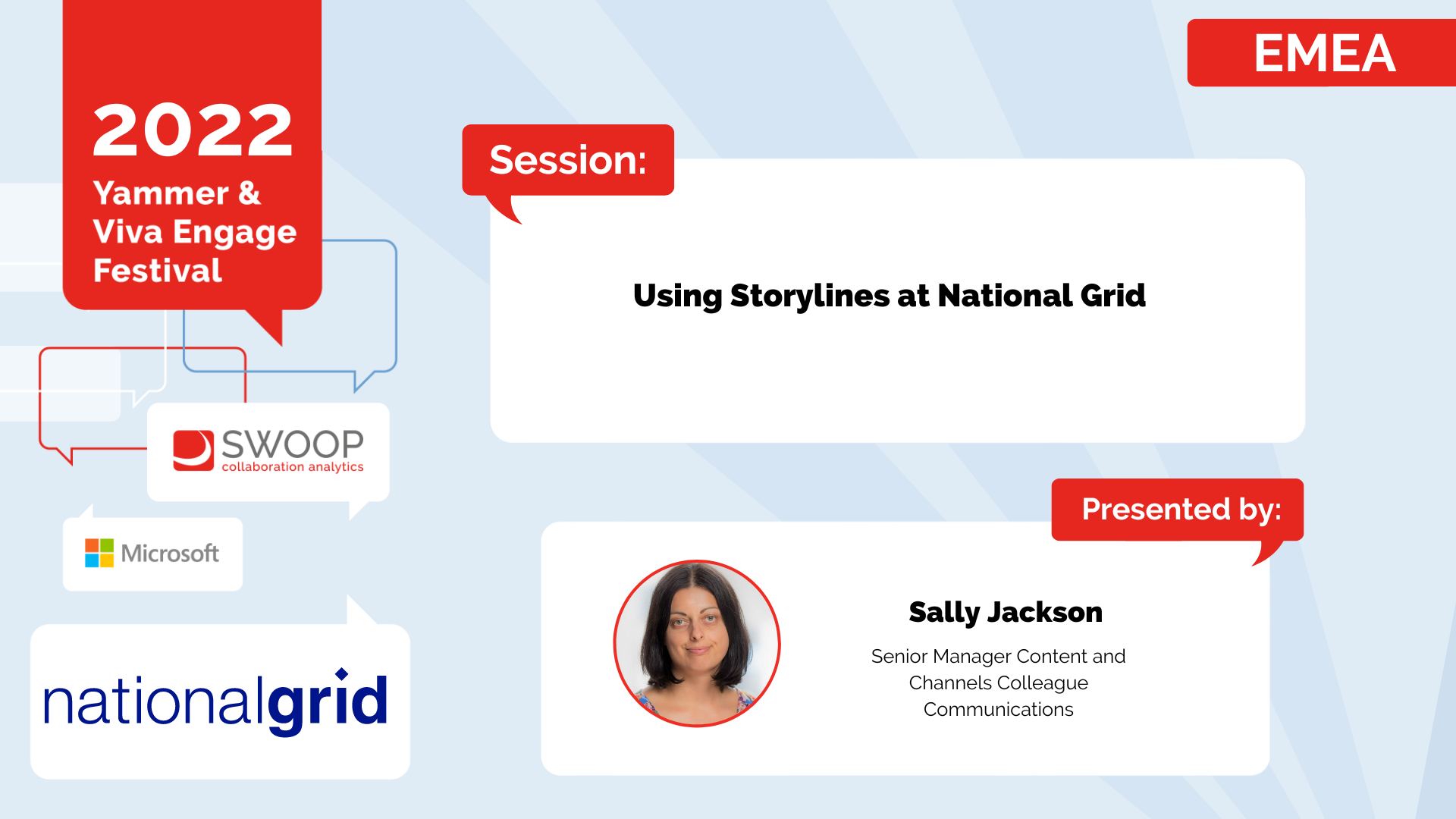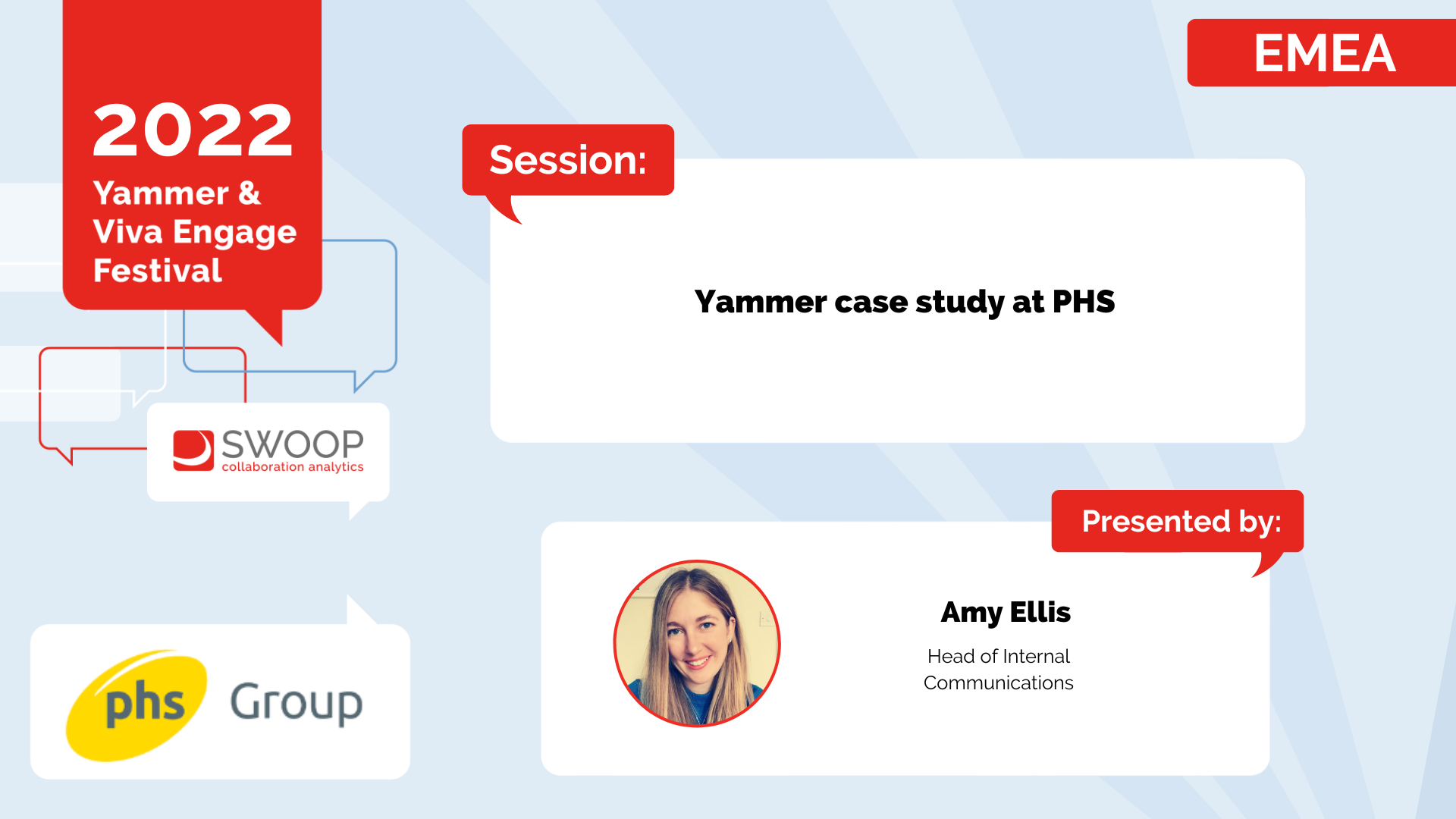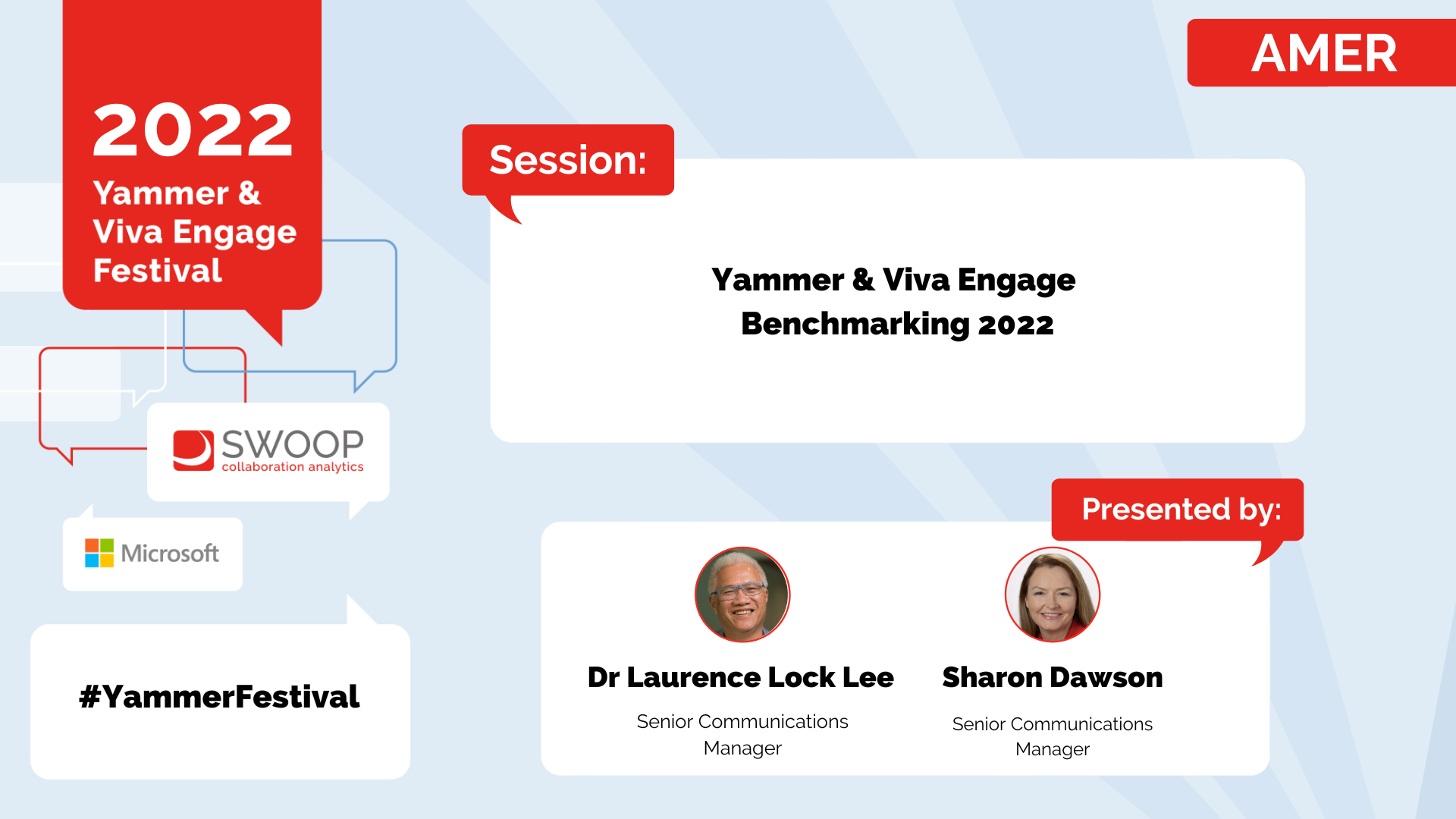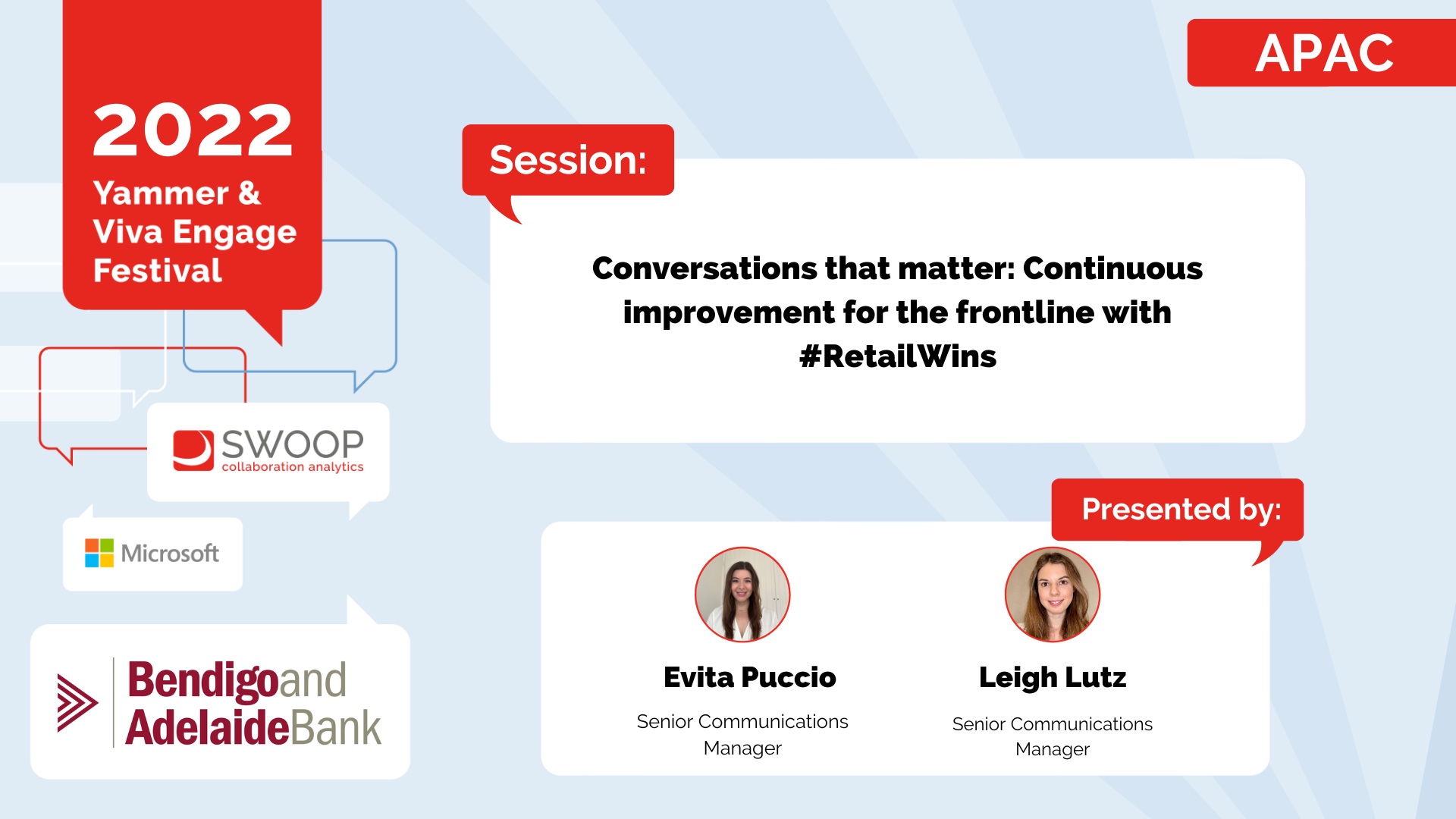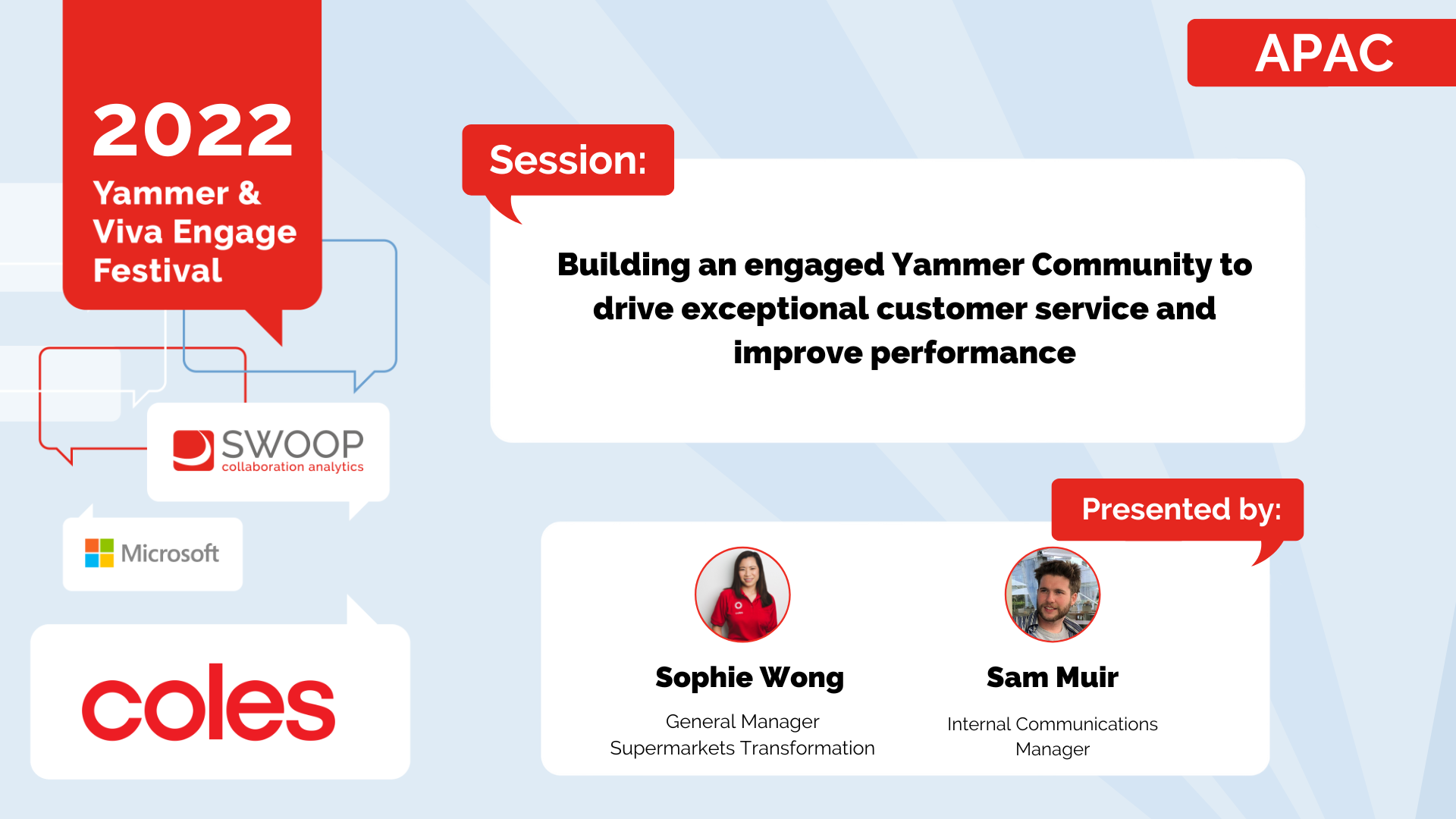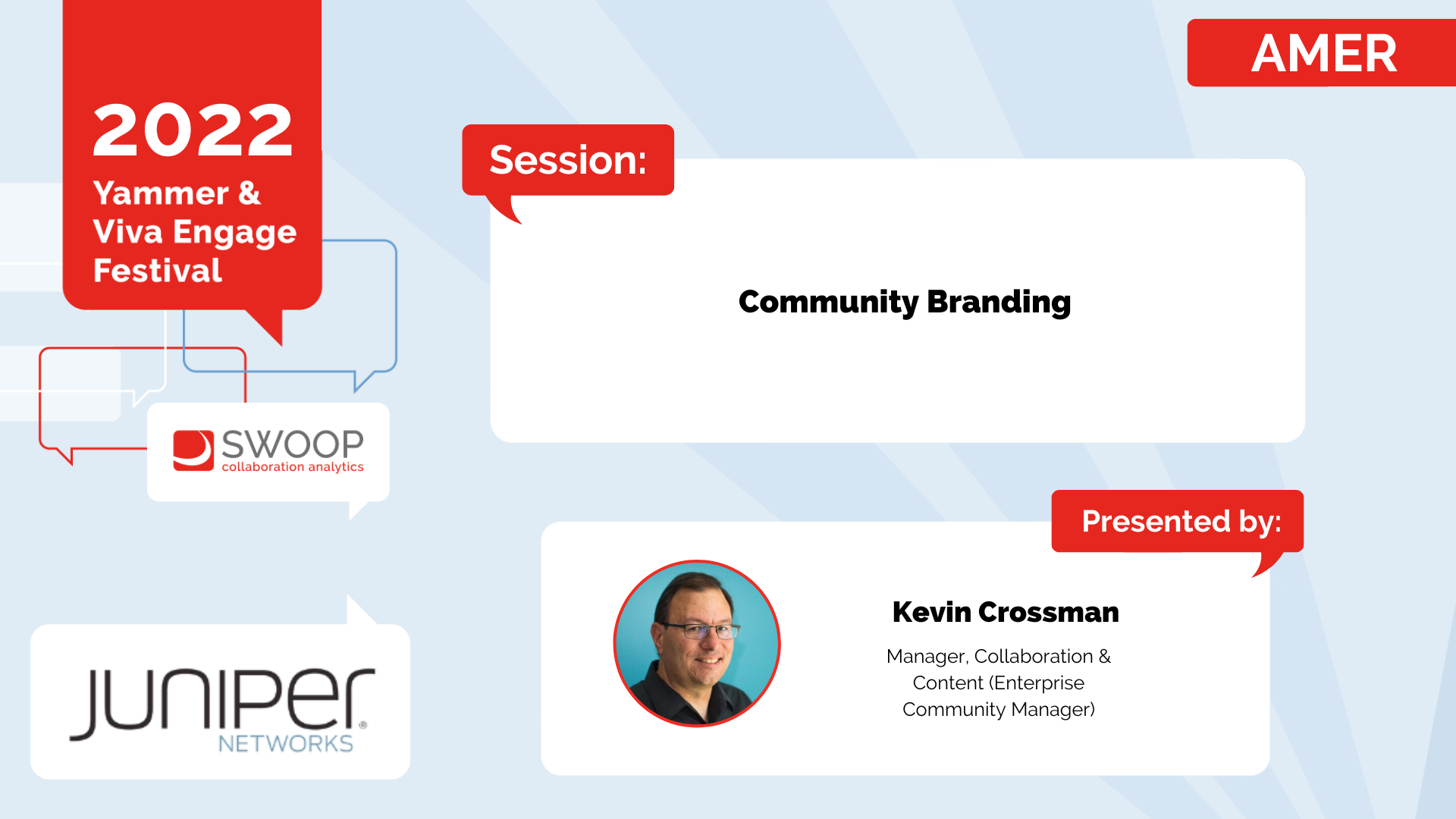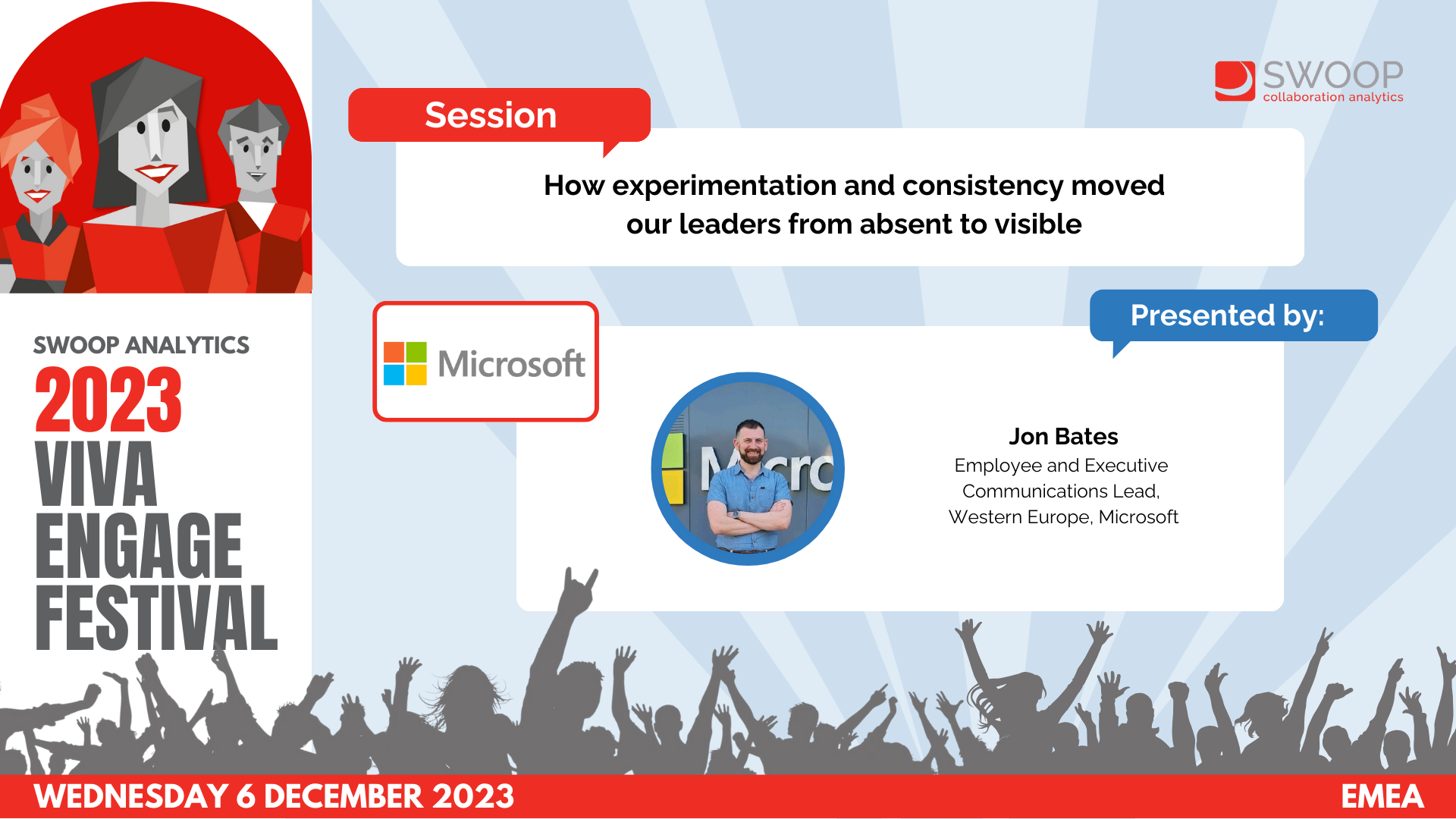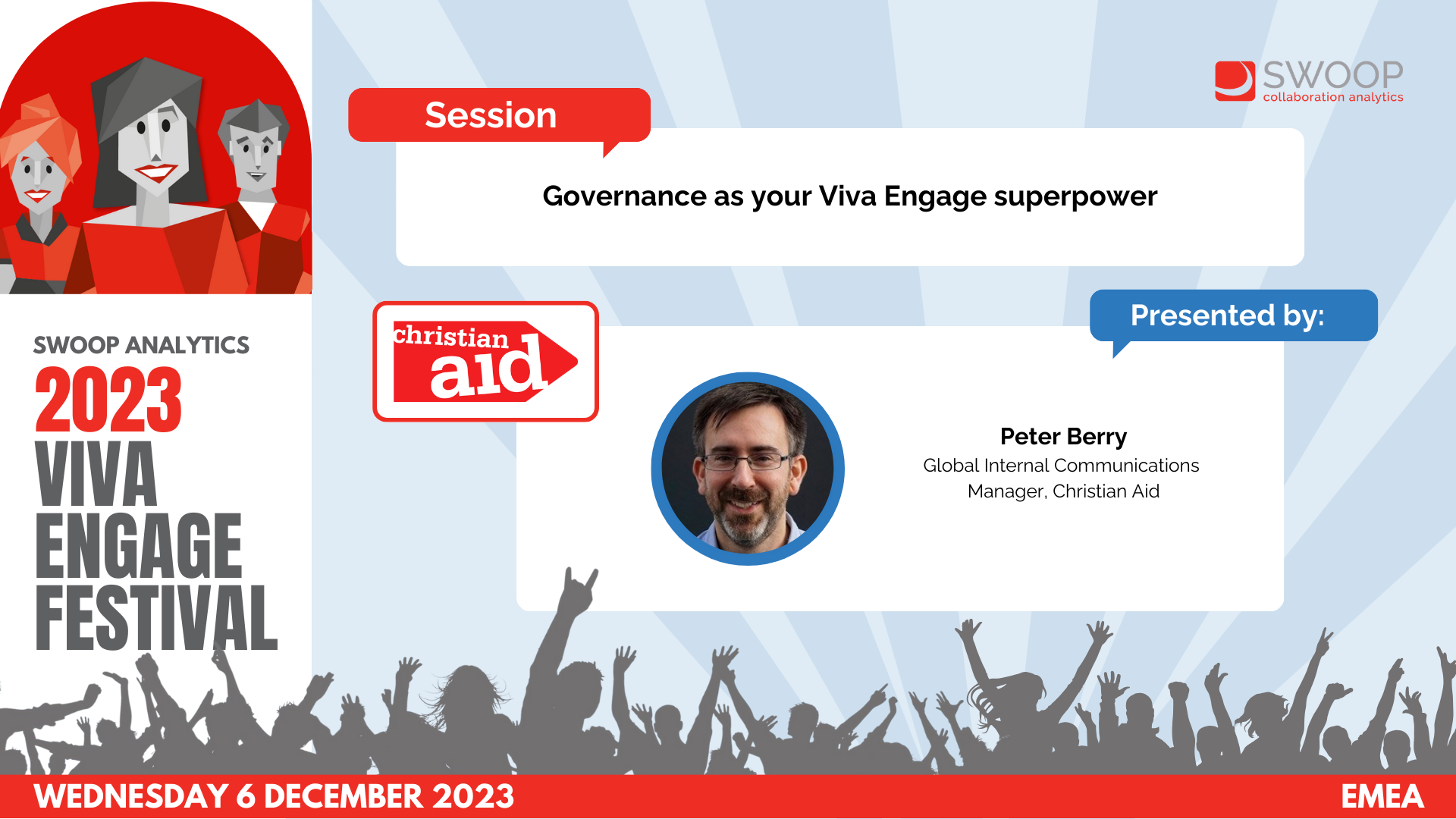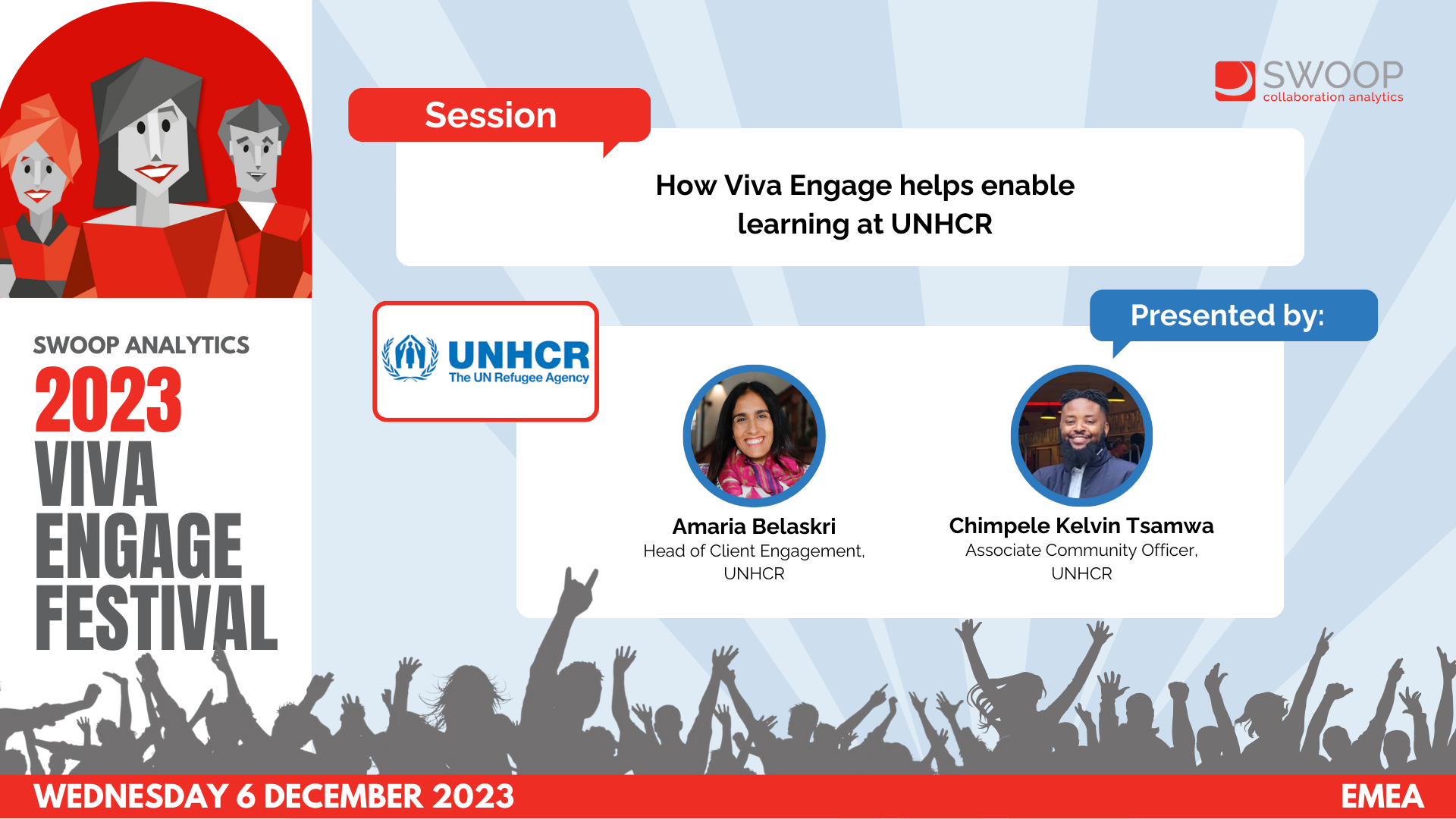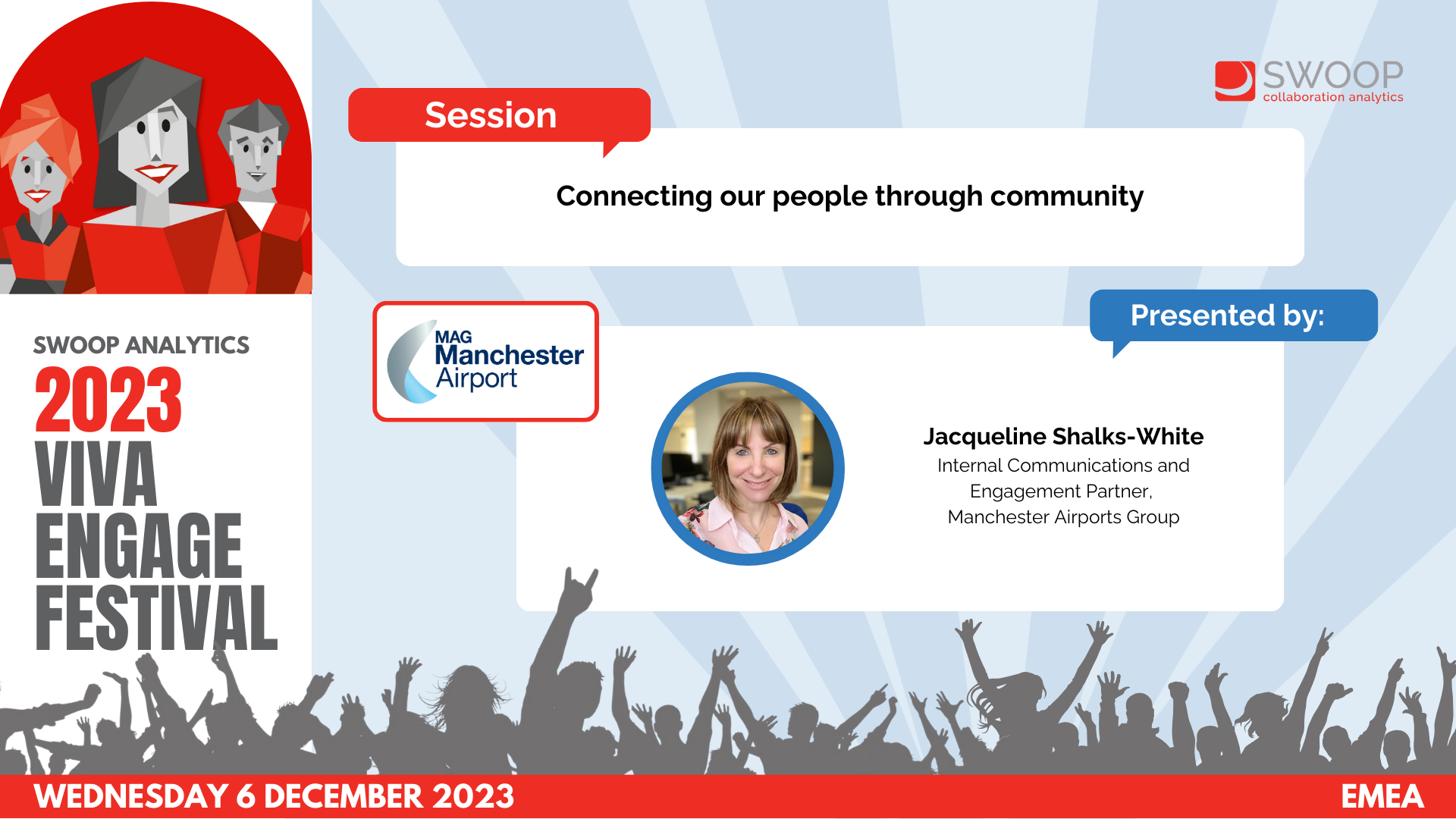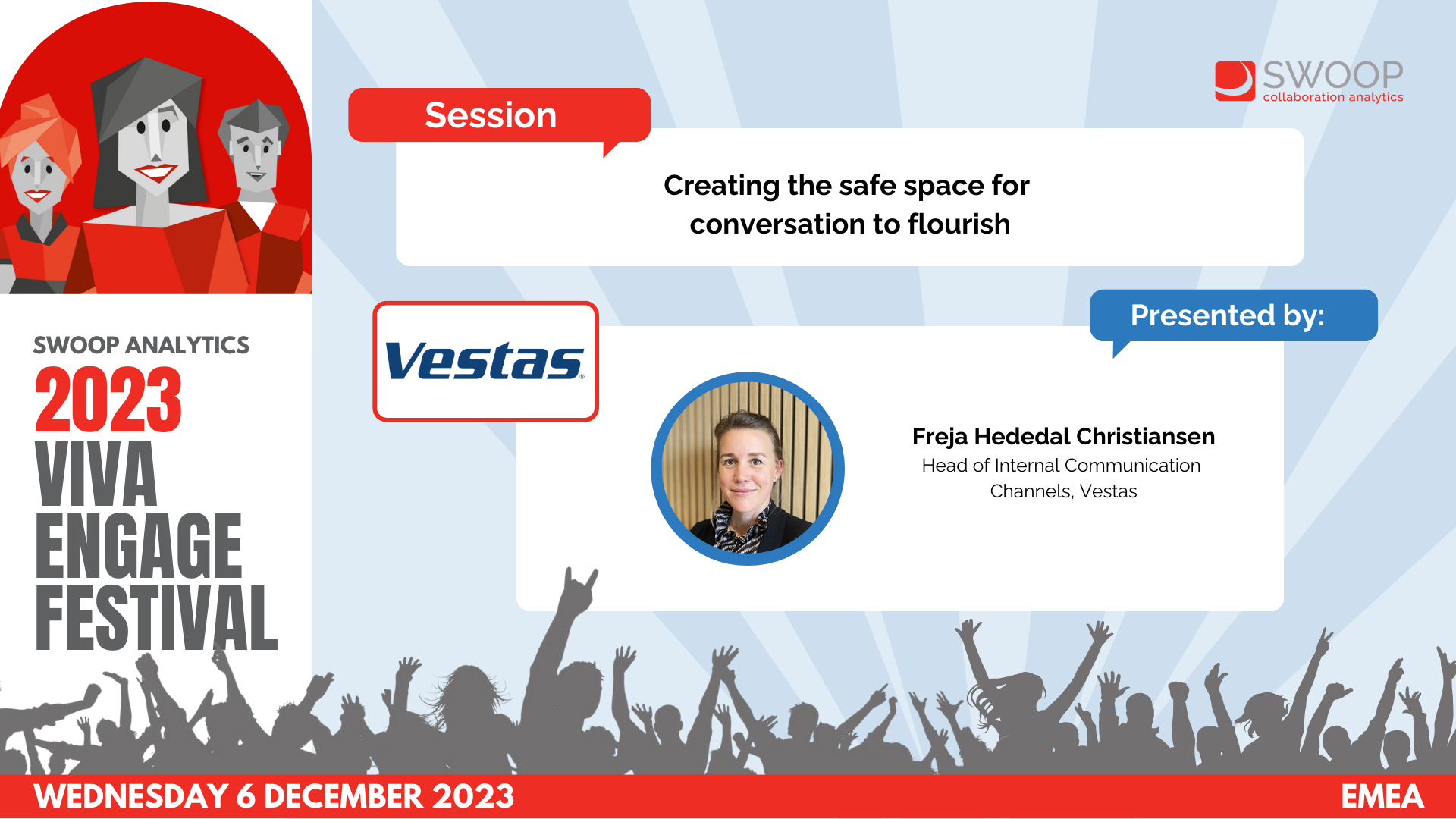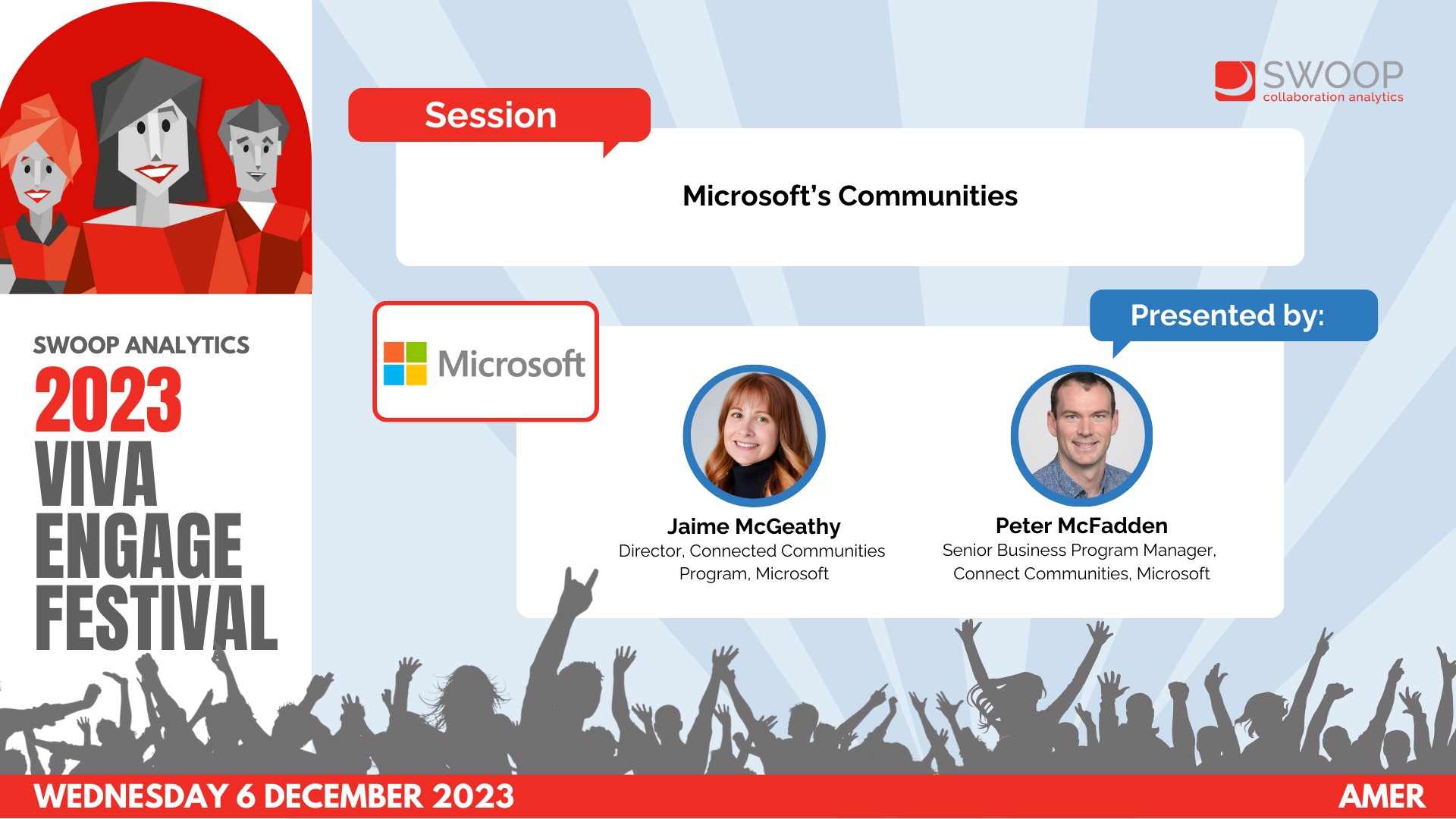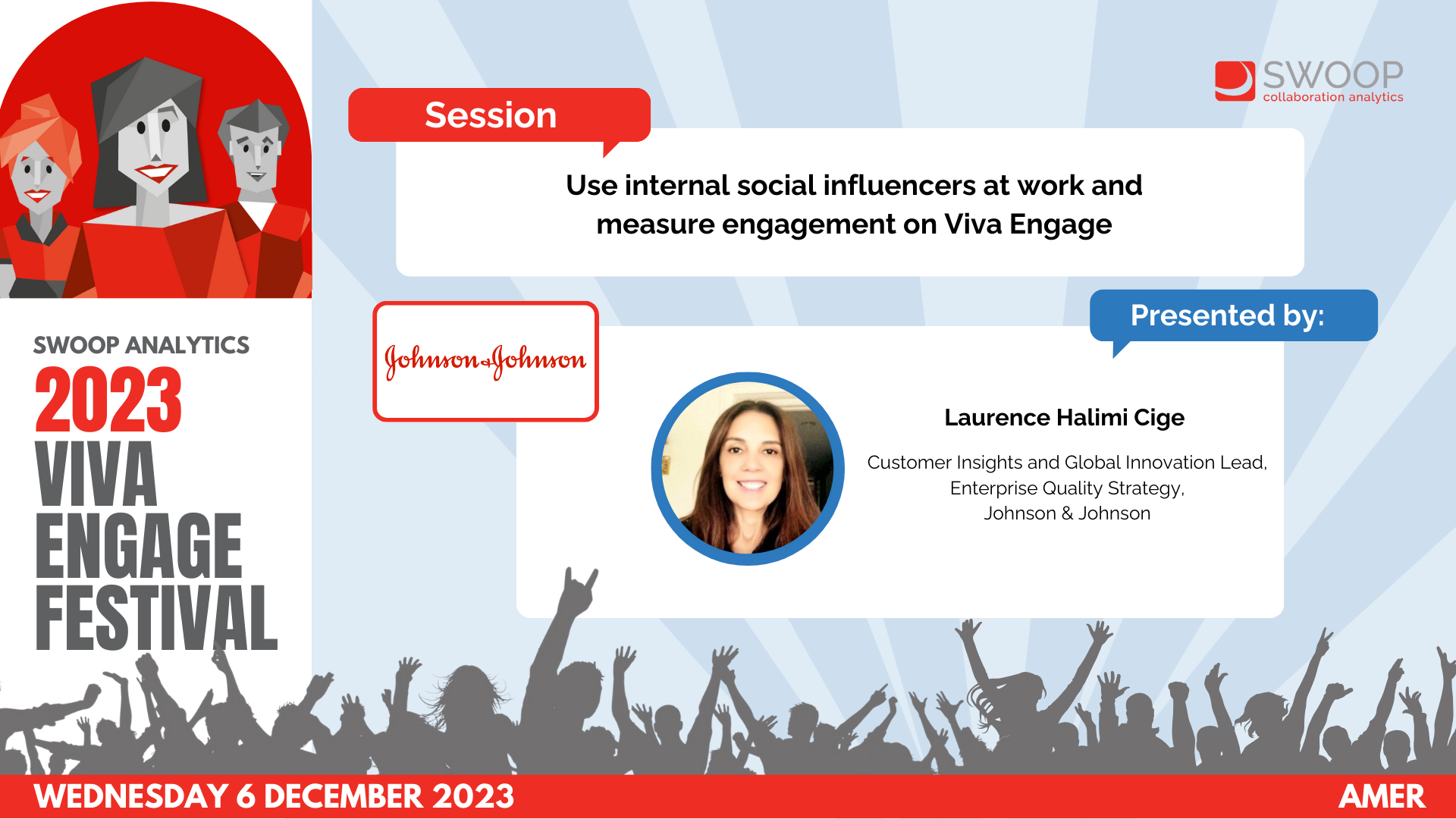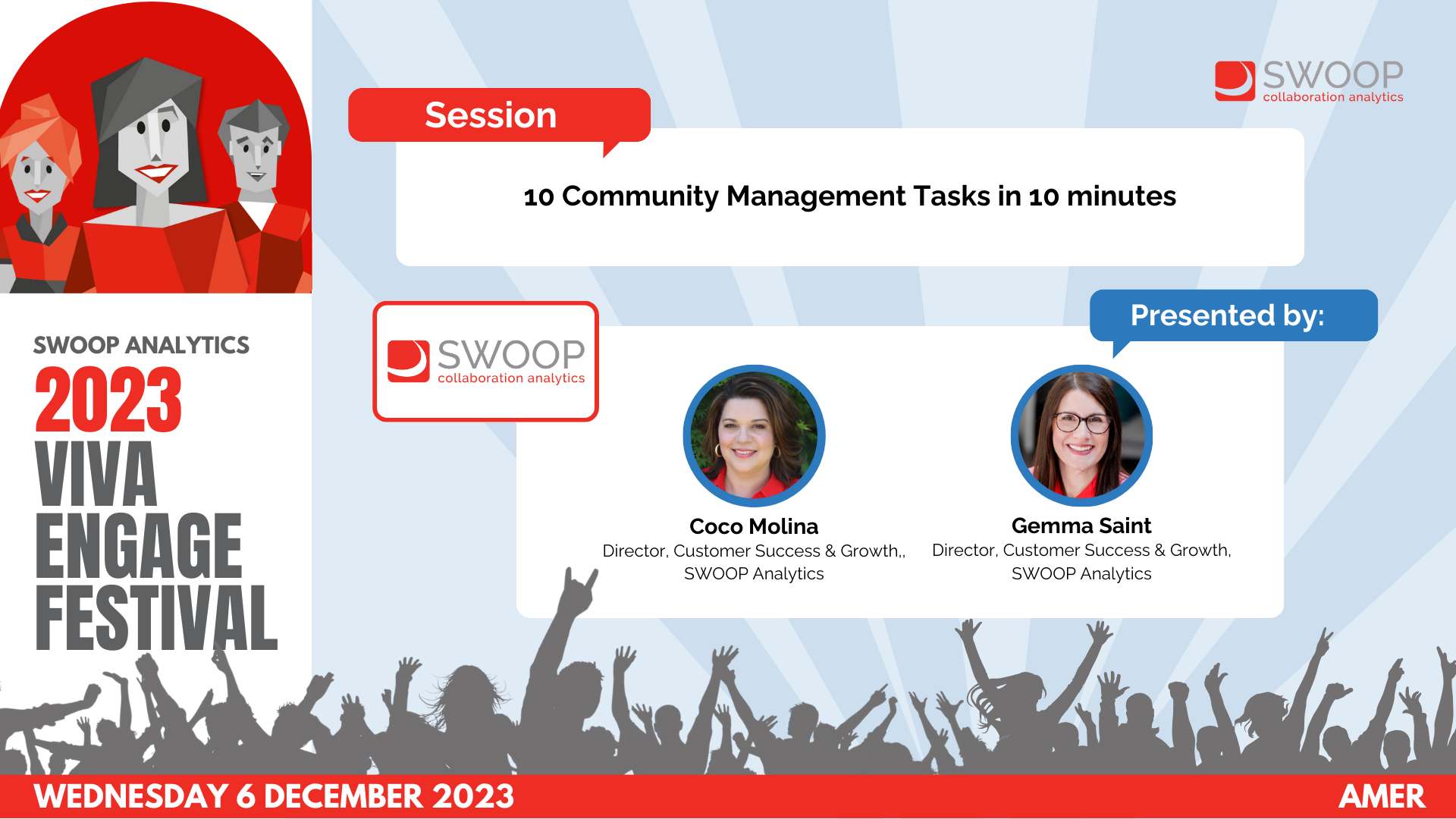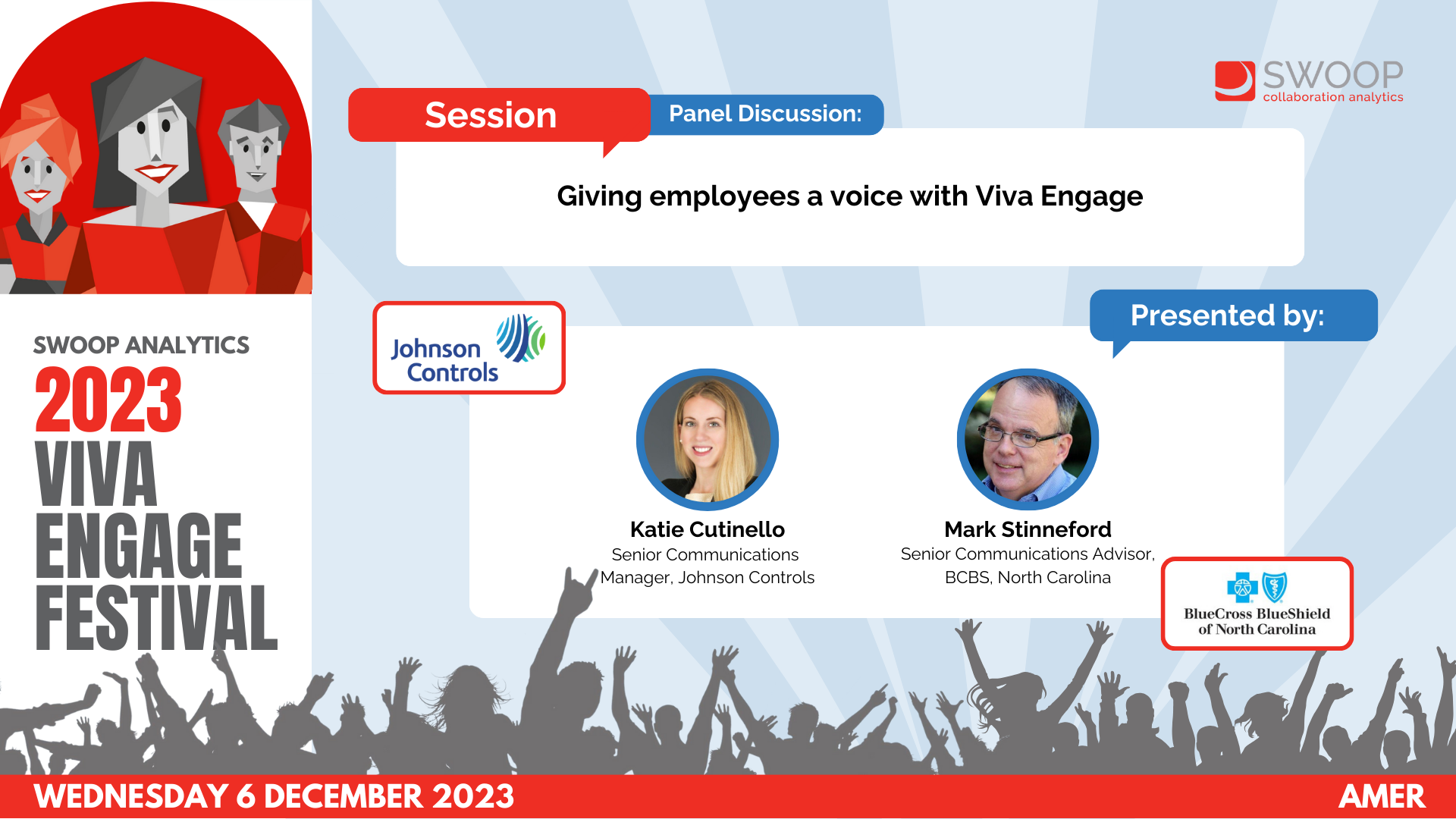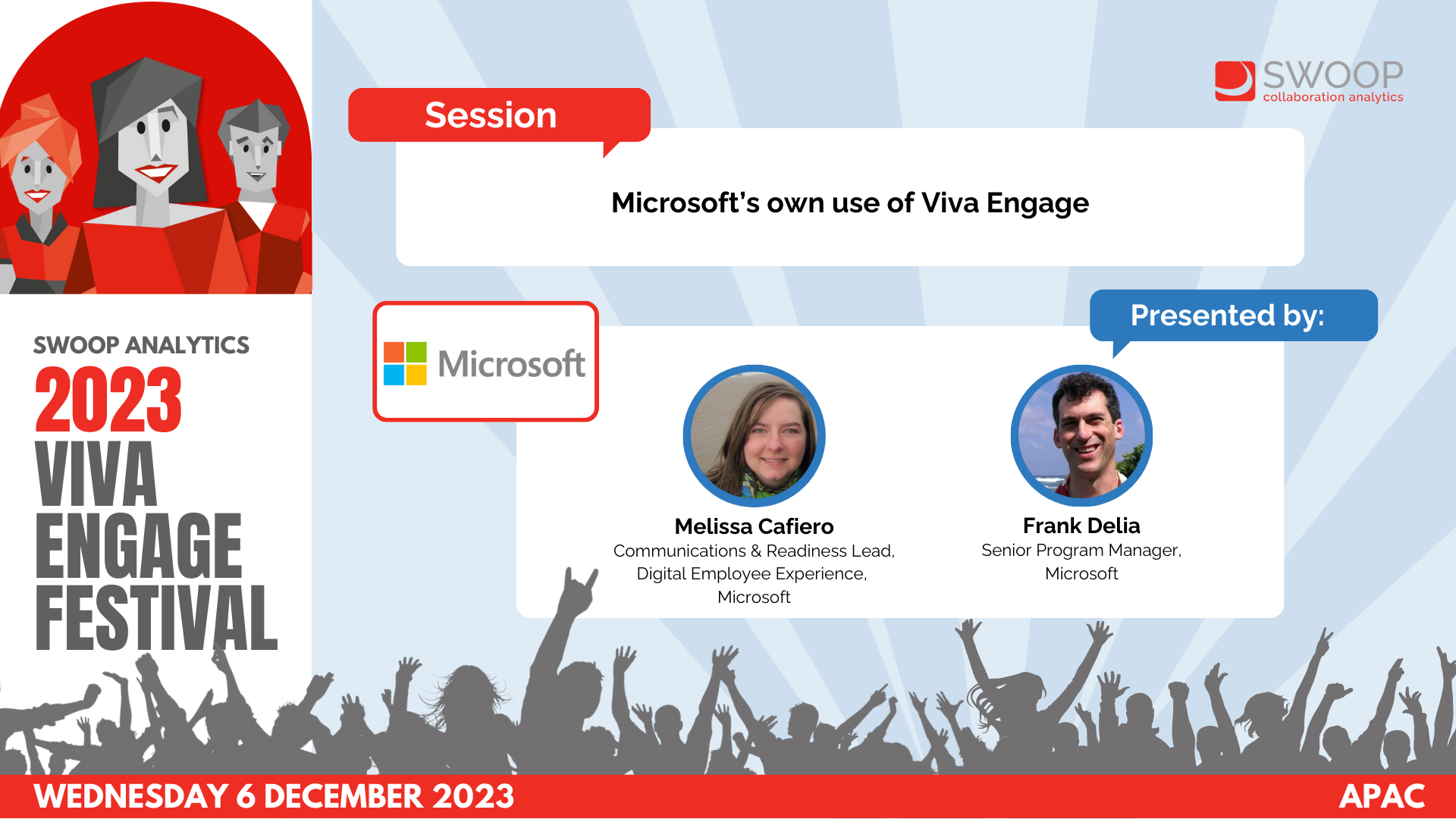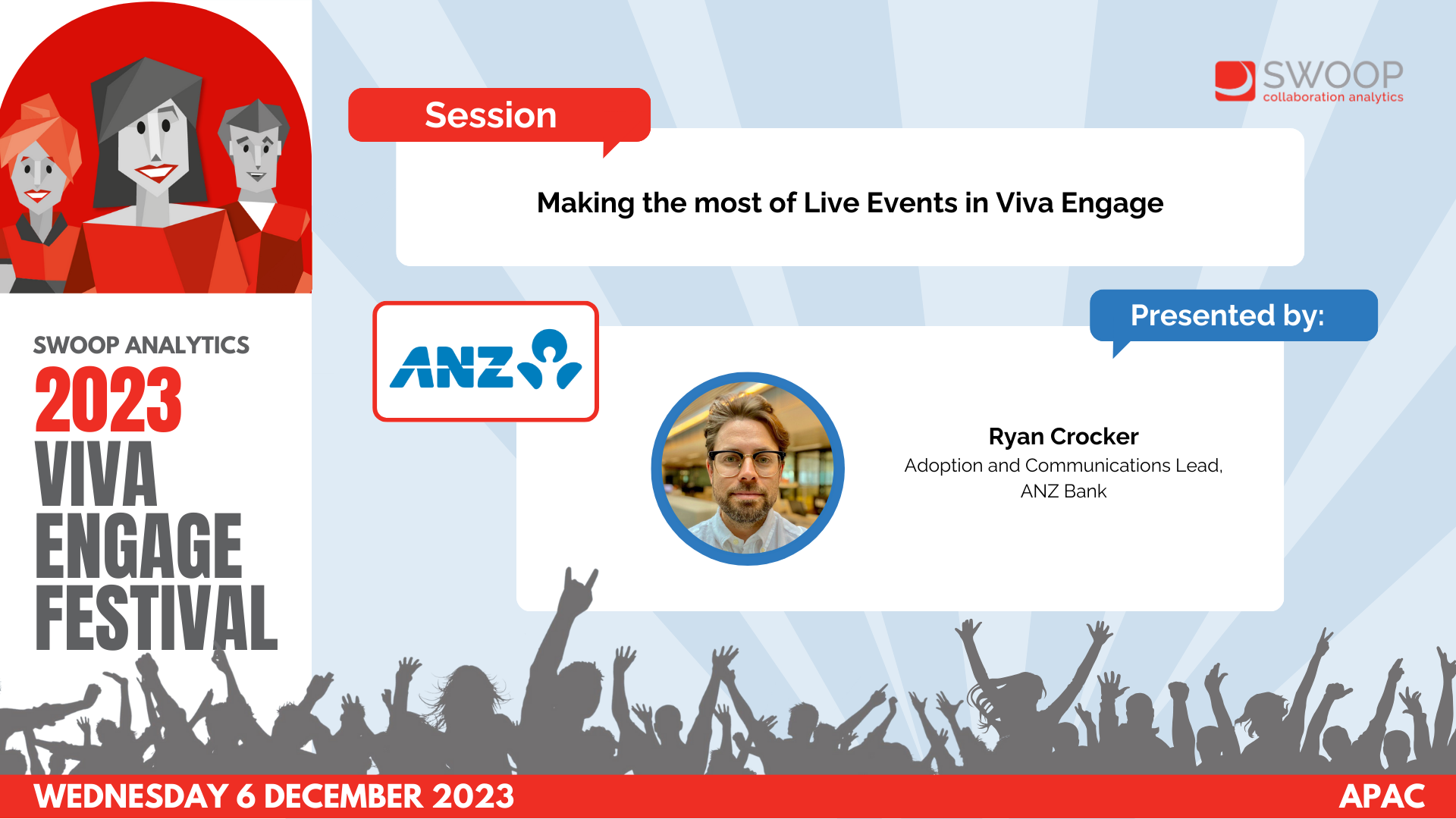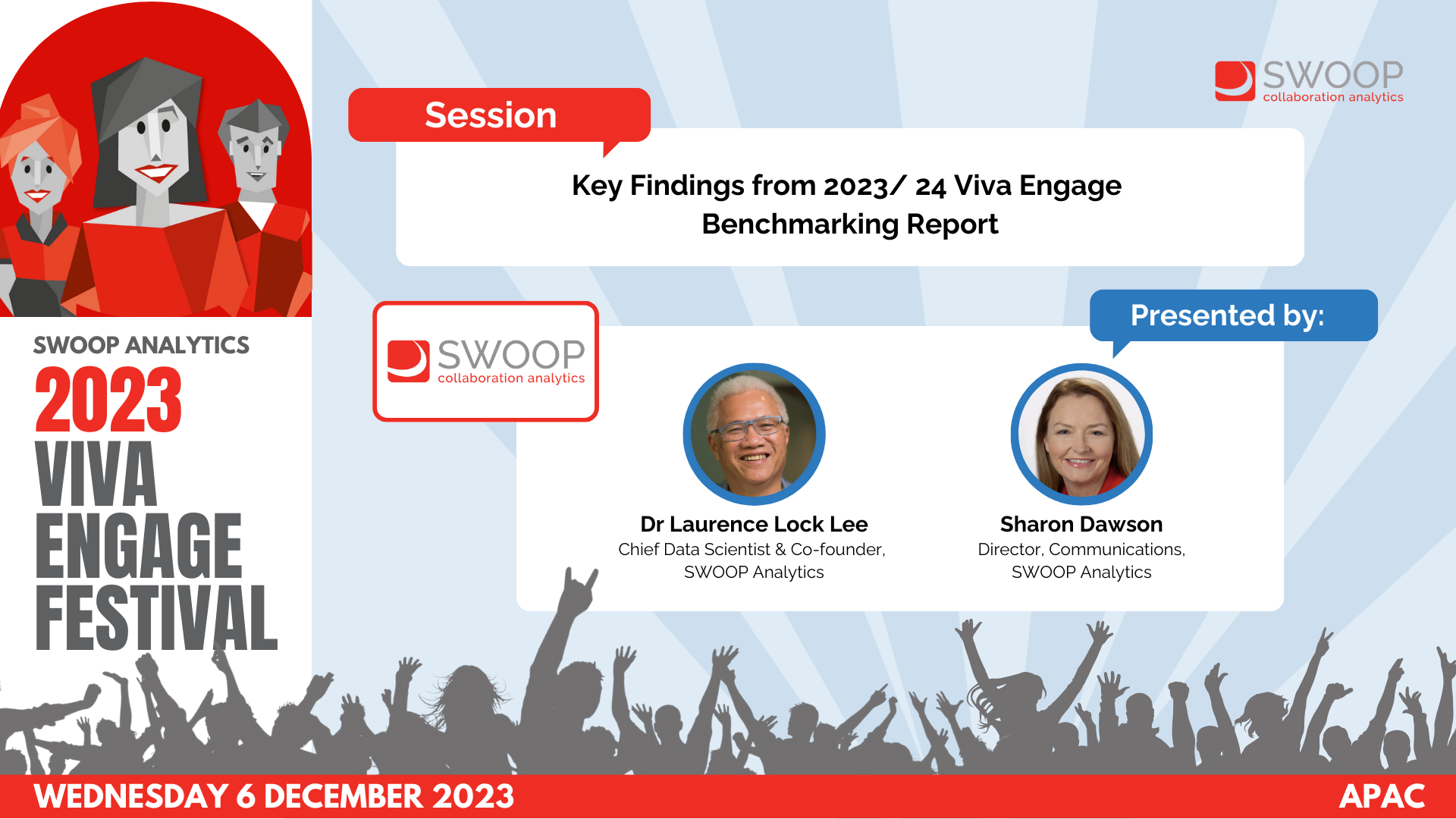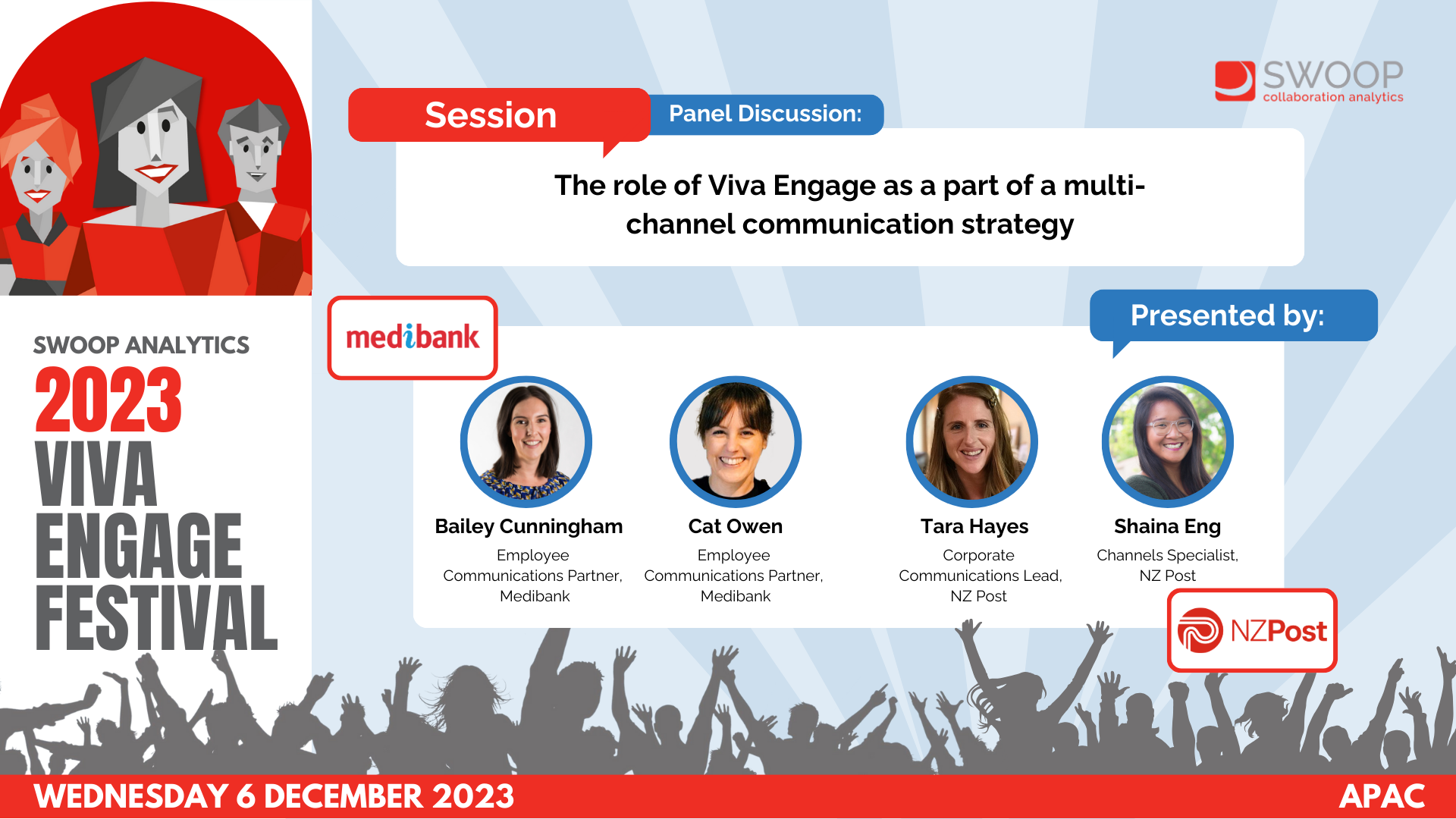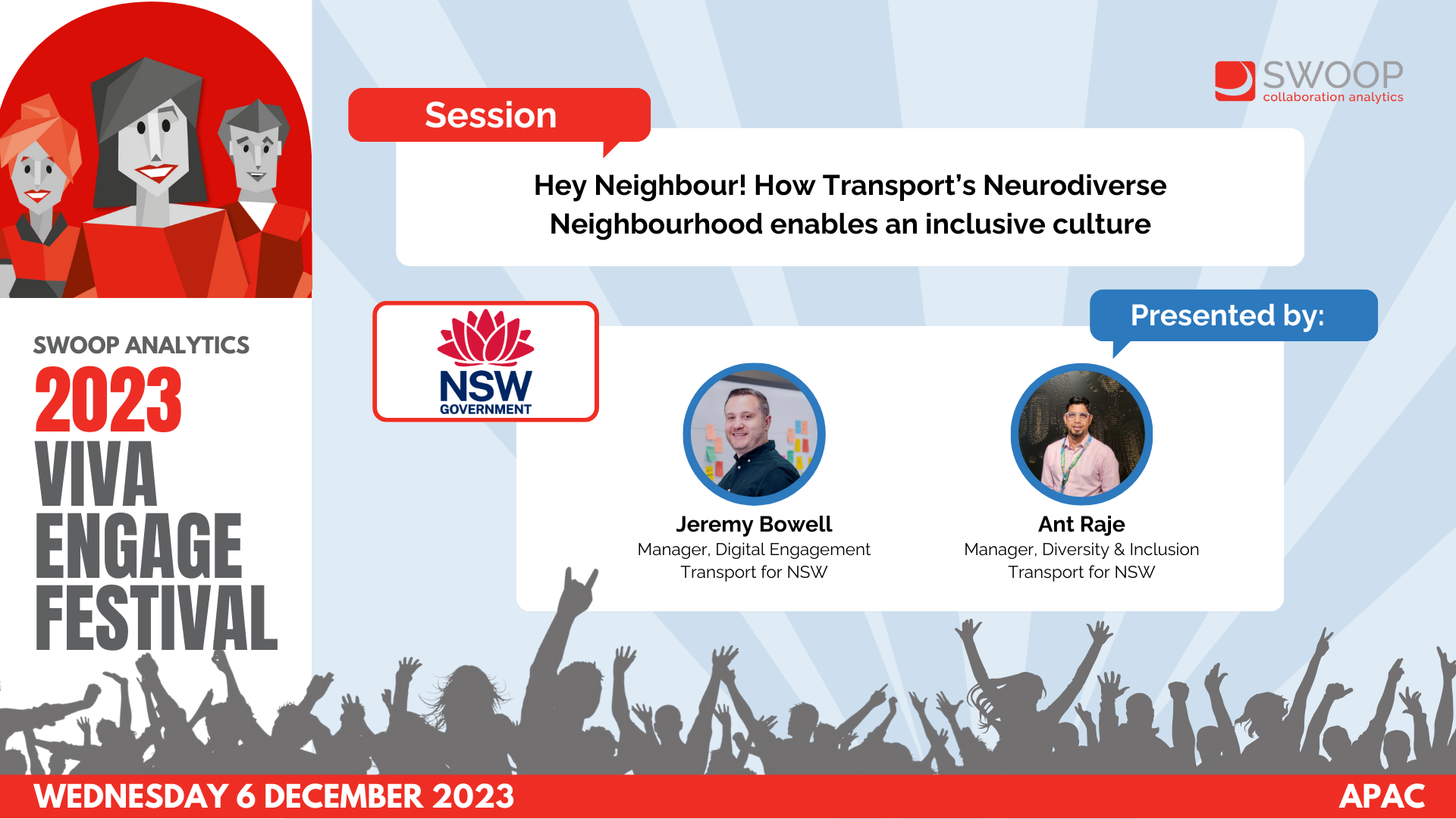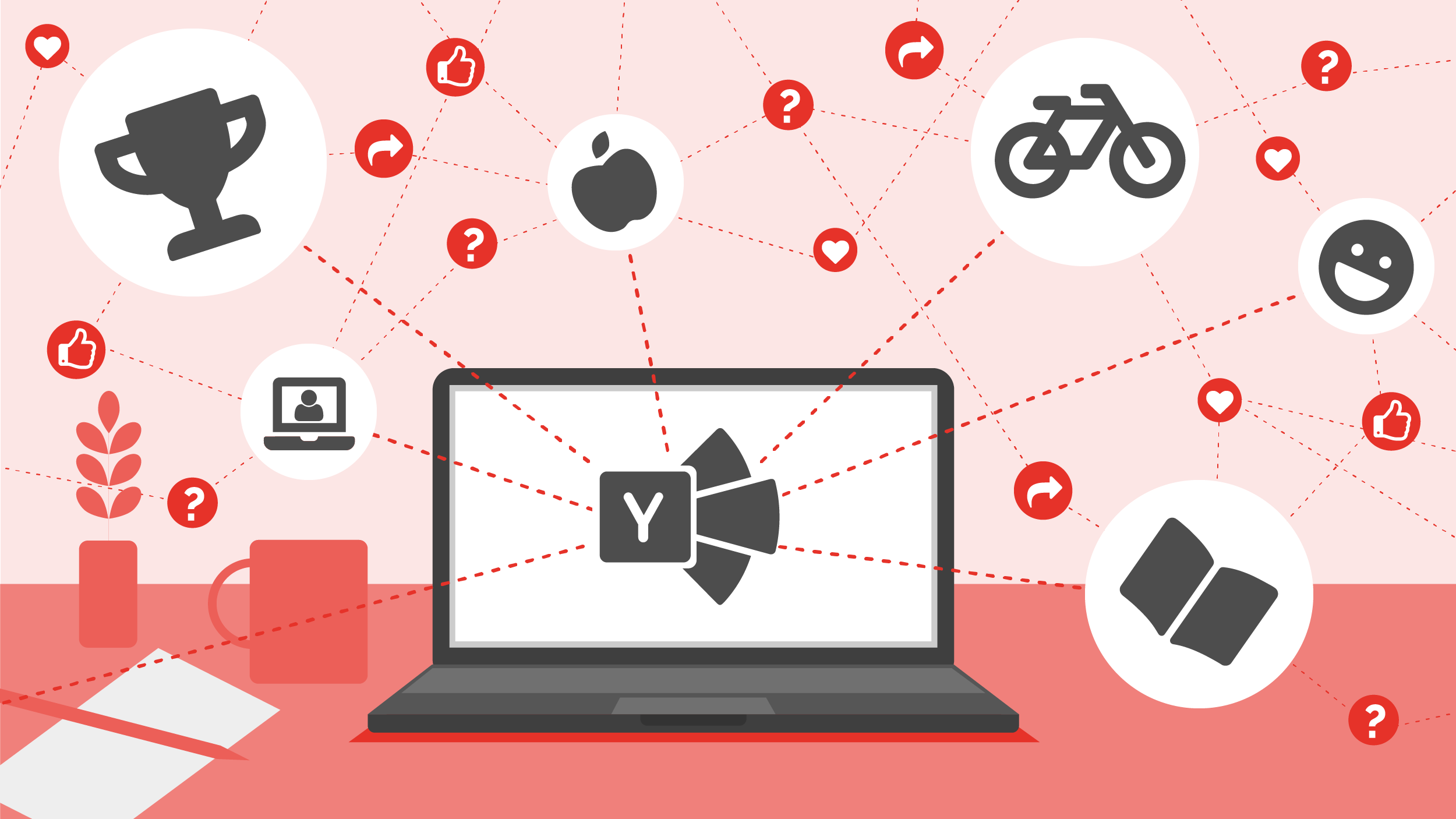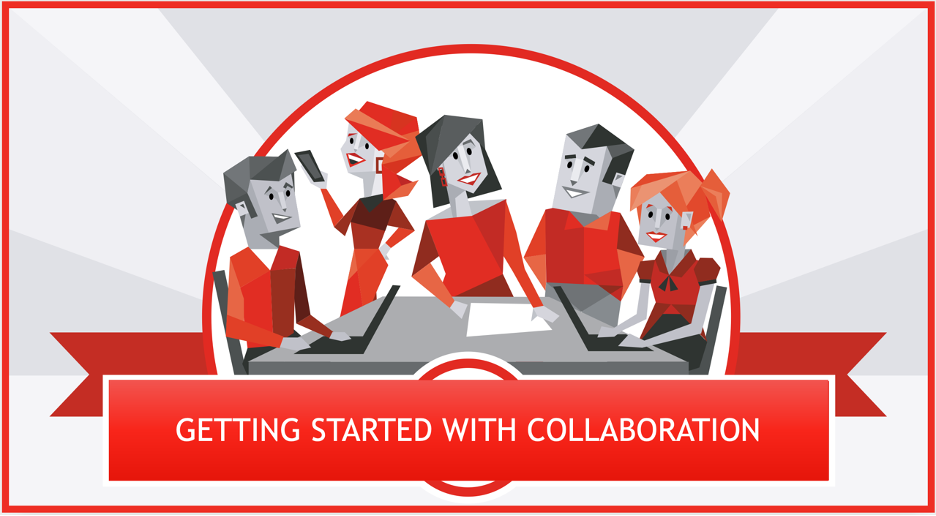Philips: Yammer at Philips with Dennis Agusi
EMEA | Yammer & Viva Engage Festival 2022
Learn how Dennis Agusi from Philips has positioned their Yammer network to bring colleagues worldwide together and build positive collaboration practices. Dennis will show us how they use Yammer by sharing best practice tips on how to best use the channels at your disposal.
-
I'm maybe presenting today, but it's the effort of the whole communications network and the people at Philips who are working, making sure that Yammer is a key internal communications channel at Philips.
So what I would like to share today is how Yammer became a key internal communications channel at Philips, the good and the bad. A little bit about myself, so you have a little bit of an idea of who I am. Now I started as an intern at Philips in 2010.
My thesis was about how to introduce internal social media at a multinational, and during my thesis we did a pilot on Yammer at that time, it was not acquired by Microsoft yet, and over the years I've been able to develop myself into the role that I have today, which is I'm responsible for internal and external communication channels. So that's not only Yammer, but also the intranet, we have a narrowcasting system, we have of course also the Philips website, so the external one, we have mass mails, which we send out to internal and external audiences, etc. So I guess many of you know Philips, but just to give you some extra context about Philips, so you have an idea how many employees Philips has, etc., I would like to share a little bit on that.
Now first of all, Philips is changing towards a health technology leader. We look at the health journey, to say so. Now you see here healthy living, prevention, diagnosis, treatment and home care.
Now in the cycle of the health care we want to deliver solutions in all those phases. So for example, healthy living, where we have specific products that we offer to people, prevention, diagnosis, MRI scanners, treatment, home care, monitoring systems for at home so people don't have to stay in the hospital anymore but can recover at home, and then hopefully everybody gets back to healthy living again. That's a little bit on our strategy.
Philips in 2021, we had just over 17 billion sales, we have a very strong brand, as you can see from the brand value, and we heavily invest in research and development, and we have over 78,000 employees in over 100 countries. So you see that we are quite internationally and spread across the globe, where of course then a tool like Yammer can help us to connect and create a sense of belonging within Philips. Now what we did when we started with Yammer is that we created a mission statement to help clarify the positioning of Yammer, especially with Teams and Yammer next to each other, there was some confusion for employees and for subject matter experts and communications colleagues, but also within IT, so we want to clarify the positioning of Yammer.
We have said that Yammer is our internal social media platform to connect employees, communities and experts. Dialogues and the sharing of knowledge and information allow employees to easily build valuable networks across all layers of the organization and discover what's happening in the Philips world and beyond. And we really focus on across all layers because we really believe that Yammer helps us to reduce the communication lines and of course discovering what's happening in the Philips world, but also beyond, because a lot of employees are also bringing the outside world inside through the use of Yammer.
Now to help the communication network to understand which channel to use when, we created a playbook and here you see an overview of that. We want to update it because this one is now maybe 18 months to 24 months old, but you see here that we have here Yammer where we say for example support leadership online two-way dialogue, then the preferred channel is Yammer, spot user generated content, then Yammer is the preferred channel, etc as you can see. But for example for publishing in-depth content we say internet is the preferred channel.
So you see here that we really try to make a distinction when to use which channel and not to use all channels at the same time, because that leads to an information overload to employees and not all the content lives the best on a specific or lives not the best on all channels. Certain content is more designed for Yammer depending on your objective and other content is more for the internet for example. So to give you some additional context, we launched Yammer in 2019.
Before that we had Socialcast, so we moved, we have transitioned our Socialcast community to Yammer, which was quite a project where we also transitioned some of the content. Out of my head we did one year of content which we moved from Socialcast to Yammer. We have 740 active communities, so those were communities active in the last 30 days and we have more than 48 million reads in 2021.
And over the years Yammer has grown significantly, especially during the pandemic we have seen a big growth. As you can see here you see some of the graphs, but yeah in in 2019 when we introduced Yammer we had over 600k monthly average. Now we saw that growing in 2020 to 1.2 million monthly average reads and then 2021 we saw moving to 4 million monthly average reads and 2022 we are continuing.
What we see is that especially Yammer live events is driving a lot of the adoption and yeah specific campaigns of course, but also specific management of the communities. And that is what I would like to share with you today. We have different categories of communities.
Now one is business focused communities, those are for example really linked to the organizational structure, which is for example personal health, which is a business cluster within Philips. Connected Care is the same, but also for example Philips North America, which is a specific market for us. Those are driven and managed by the communications network.
Those communities have KPIs owned by the communications network, so it's really fully owned by us. It's based on organizational unit and you are added to the community, but others can join as well. So that's what we see, that the communications person is responsible for updating the community members and adding new employees to that community.
And what we have seen as well to drive more adoption of Yammer, some of the communications people have moved their newsletters and people announcements to Yammer. Here you see a couple of examples and what you may have noticed is that you see a lot of emojis to structure such a newsletter. I think it can work and we've seen some success in certain businesses.
What you maybe also have noticed like a Yammer announcement feels like a mass mail plus to me, because you can interact with it. A normal mass mail you cannot interact with it, you cannot react to it or you cannot comment on it. Nowadays you can react within Outlook, you can react to a Yammer announcement, which is of course really great.
We see that the Yammer newsletters are really like high-level newsletters. A sentence, two sentences and then it's being linked to internet articles, videos or for example another Yammer message, so deep links to deeper content to say so. Now what I mentioned already just a moment before is that we position Yammer announcements really as a mass mail plus.
Email newsletters still exist and they are often linking to Yammer messages, so that is something that we see that is being more and more done, where user-generated content is being used in newsletters. Moving to how leaders are leveraging Yammer to engage with their teams is that we see here the previous CEO, there was recent a CEO change at Philips and the previous CEO participated in a campaign where we wanted to be active during the pandemic and we created a campaign where we would collectively run or swim or walk or whatever activity you think is applicable to you, 250,000 kilometres. Our CEO at that moment shared that he was running with his dog 10 kilometres to contribute to the campaign, which was really nice to see and this is really showing him on a deeper level, really showing the human side of him.
He shows his personal life, he has a dog, he's running, he's being active. They can easily also leverage this as a strategic direction by recognizing certain projects and behaviours, that is something that we see here, where the new CEO is reflecting on his first month as CEO and where he's showing that he finds it important to meet with customers. So those kind of elements is something that leaders are doing within Philips, really giving strategic direction as well.
You see which critical lessons learned have you noticed and learned from this actual situation as management and then you see here our CEO is reacting to that on his own. Very clear and open and transparent and this is what Yammer has brought us, a very open and transparent way of communicating. A quite significant change I would say, if you compare it to the traditional way of working.
Now we also leverage Yammer for giving tips and tricks. Now this is then being posted in the everyone at Philips community, which is also known as the all company one. We renamed that community to everyone at Philips, we wanted to make it a little bit more inclusive and more human.
And now we have over 7 000 different acronyms and now you can search through the internet, you can search an acronym and it will define the acronym for you and we promoted it and as you can see that's quite popular. Also some interesting discussion, like why do we have so many acronyms and the use of acronyms, but it really helped us to drive engagement and we have more of these type of tips and tricks and that is what we try to work on. You see that this type of content would not easily work on the internet because it's more an engaging way of communicating with employees and also there were also some really good ideas coming from employees on how we can reduce the amount of.
Then we have a different category which is interest-based and service communities. Here we see that we have different communities driven and managed by subject matter experts. Subject matter experts are trained by us.
Majority of these communities have KPIs owned by subject matter experts and you see a couple of examples. Learning at Philips, Microsoft Teams, Neurodiversity Network, Inclusion and Diversity etc. To give you an idea, this is really managed by the IT support team.
Employees are also helping each other but this IT help community is really there, really managed by the subject matter experts in IT. They also leverage this to give tips and updates on specific tools. Here you have an example very clearly where they are using the hashtag moderator to identify that they are an official IT support person and here this person gives them the official answer from the IT support team.
Here you see an example where yes we find this community more helpful than going to the help desk which is also interesting because a specific subject matter expert jumped in and gave the answer instead of a first-line IT support person. Here you see an example of keyboard shortcuts in Outlook Excel and other tools to improve your productivity and accuracy. People really love these kind of tips and tricks.
Then we have a last part which we allow on Yammer. I've seen some companies are not doing this but social communities. Those are driven and managed by employees who are passionate about a specific topic.
You see here cats, bike to work, energy management, running at Philips, Philips photographers group, all those type of groups. They really function as a way to network and build social capital and really employees love that they can connect with others around their passion and give you a little bit of an idea. You see here the Philips photographer group.
Here you see how so cool to have a photographic group here. You see here I joined Philips three days ago and I'm so glad to see a fully active photographer group here. You really see that people all around the world are connecting with each other around these photos and out of this we have even generated a holiday e-card with user generated content from employees which is really nice to see.
The photographer Yammer community is super engaged around this of course. I had to share this one around the cats group. I don't understand it but people really love to share their cats pictures which is really nice to see that people are engaging around this specific topic.
Now a couple of tips that I would like to share with you is that trainings are really key for driving Yammer adoption. There are five trainings that we made available. Basic training, really focusing on the concept and the basics.
Community management training, how to manage a Yammer community. Supporting leaders, how do you support leaders in utilizing Yammer for their strategic goals. Practical tips and tricks, how to create engaging posts in communities.
Then we have analytics. Now you see that these five trainings really help to give people the confidence to manage a Yammer community and we believe that this really helped us to drive the adoption of Yammer to the state where we are today. You cannot believe it but the most popular part of this whole training curriculum is the emojis.
People really love it. It really gives another dimension to communications and if you remember one thing it's that you should start using emojis a little bit in your communications. We really help it.
We really use it to visually structure the post in Yammer. It's very simple. You just use your windows key and the dot and then it opens a new menu.
It doesn't matter where you do it in Outlook, Yammer, it works on different places within Windows but it's one of the tips that really hits really good for us. I think that's where I would like to end Pete. Fantastic.





